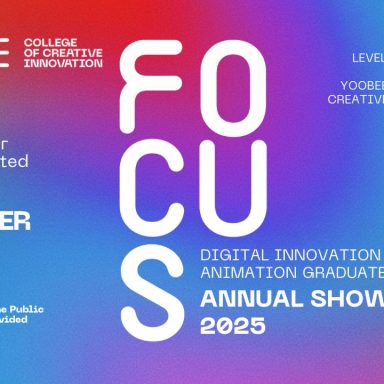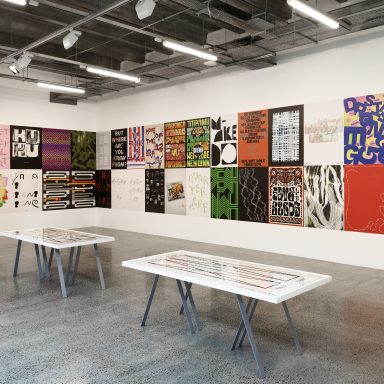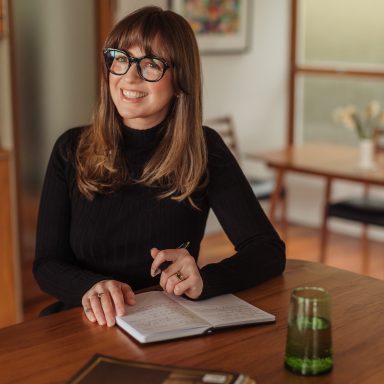Recap: Studio Culture and Wellbeing in a Hybrid World
Last week we tuned in online for our Autumn conversations panel which dove into how we navigate studio culture and wellbeing in a hybrid world. If you missed out on the event, here’s a few key takeaways and some of the questions we discussed.

A few of our audience questions:
“Do you think that businesses and leaders are distilling their insights into what we have learned from being in a pandemic? Is there enough reflection and understanding going on to design a way forward, rather than switching back?
Naomi Jones (Humankind) – I think there’s a massive opportunity to decouple the pandemic response ways of working to the future ways of working. I think there is so much confusion in that at the moment. How you work and operate efficiently in a pandemic is so different to how you set your business up for success for your future. There’s heaps of lessons you can take from being in a pandemic for the future but they need to be completely decoupled. That’s a stress moment and you don’t want to perpetuate that stress moment of being in a pandemic. Most businesses will need to be deliberate and work out what worked well and what they want to carry forward and doing that with your people rather than just the leadership cooking up a way forward.
“We are a team of about 60 and growing fast, is remote working or a hybrid version of remote working better suited for smaller or larger teams?”
Andy (Streamtime) – I don’t think it’s as simple as that, when you’ve got 60 people you’ve got teams within teams. You’ve got people that will workout what the momentum and processes are they need to create and put in place for individual teams. I’ve seen this at an agency with 90 people in London where they’ve been able to create teams who work on certain projects and they will work out their own philosophy and their own working practices. So you take that 60 and break it up . . . I think it’s about the teams you set up and the way they want to work to be most effective.
Raul (Freshfish) – So size is not the matter. The matter is culture. The matter is dynamics.
“Do you feel that there is still some ownership a business needs to have to keep in person contact alive in a hybrid world? Especially when looking looking through the lens of wellbeing and the responsibilities to monitor that as an employer in NZ?”
Michelle (Publica) – For us, it’s been a balance between keeping people together both online and having those in person catchups as well. As times gone on, I feel that the team has made more of an effort to get together outside of work to be together and to be connected. I do feel incredible ownership of making sure that there are places and events that we’re doing where people can make the choice to come see people in person if they want to.
Naomi (Humankind) – I see wellbeing and in person contact as not necessarily one in the same thing. As a business leader or owner, you will always have responsibility for the wellbeing of your people, whether they’re in front of you in person or at the end of a phone line or computer screen. Now, one of the levers you might pull to help you support your people with their wellbeing, if it’s important to your business and to your people, is to bring them together in person. But, I don’t know that being together in person equals good wellbeing.
Andy (Streamtime) – I think it comes back to choice. Right? Like, that one-size-fits-one, your version of what makes you healthy and happy is completely different to somebody else’s. If you’ve got leaders trying to pour solutions, even with the best intentions, you’re taking away some of that choice and the flexibility that we’ve been able to get for ourselves.
“How could an in-house team implement ‘outcomes-based productivity’ and flexibility in a business which focuses on a ‘time logging’ model?”
Andy (Streamtime) – It’s really about understanding why we log time. Ultimately we log time to get an understanding of how profitable something will be or how long it will take to do. So, I think that you can do outcomes based work and you need to allocate time but you don’t need to go so granular into tasks. Block out time for a day and say ‘this is what I was working on, this is what I wanted to achieve today, did I achieve it or not?’ then you can log that as you go. I urge people to remember that logging time is about understanding how much money you should charge for things in the future. Ultimately, that is what is going to help you get to being outcomes based while still making money and ensuring you have enough time do things in the future.

Discussion Key Takeaways
Hybrid working isn’t as simple as half the team work from home and half in the office, or everyone comes in on a Monday.
Being told that you have hours of X to Y at home or in the office isn’t actually flexible. Flexibility is allowing your people to design their work the way they want to be.
Methods for hybrid working
Asynchronous meetings, creating space for fun and play as well as work. Connecting the teams by recreating “coffee cup convos” or watercooler conversations which allow ways for there to be serendipity and interaction with the team.
There is no one size fits all solution – for individuals or for teams
Even large teams have “teams within teams” that can be hybrid.
For individuals – everyone has their own pace for change.
The role of leadership in culture and wellbeing
Naomi Jones (Humankind) – Leaders cannot be solely responsible. It takes a team and each individual. Leadership cannot force culture but they can set the vision, let it unfold and nurture it.
Andy Wright (Streamtime) shared an example about his team members doing something to take care of someone else – it wasn’t a directive from leadership, it was a reflection of the culture that the leadership had fostered.

The Autumn Conversations Panel is one of our many events throughout the year where we bring together designers and studios across Aotearoa to network, upskill, and discuss design.
To enjoy free access to events and discounted workshop tickets along with opportunities to promote your studio and profile your design work across our website, podcast, social channels and newsletter, consider joining our community with an annual DA Friend membership.
To learn more about which membership option would be best for your studio, click here.




